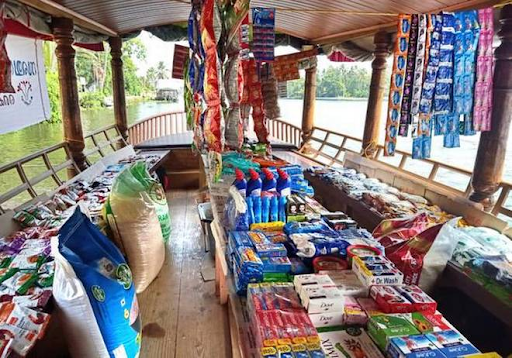
A holistic approach to measuring generosity requires looking beyond financial transactions. If we continue to look at “giving” as being defined as monetary transactions between donors, institutional foundations and registered charities, we’re looking at only a small piece of the full picture. The world of giving is interconnected and interdependent, involving human behavior, cultural traditions, giving efforts both structured and unstructured, and grassroots leadership, all of which have enormous daily, local, and global impact.
The concepts of community care and mutual aid, while popularized in mainstream media during the pandemic, have been around for thousands of years in various iterations across cultures around the world. Capturing what this type of informal giving encompasses, who it serves, and how it manifests in communities will be vital to the sector’s understanding of how generosity is expressed.
The pandemic gave us an opportunity to see this ecosystem—which doesn’t operate within the traditionally defined social sector—in a much more pronounced way. This crisis has put a spotlight on how crucial these community care networks are for providing healing and supporting a thriving and more connected society.
The term community care typically refers to the voluntary exchange of resources and services between community members to provide support for those who need it. It enables people to pool resources to share collectively. These resources could be food, clothes, diapers, money, or virtually anything that can be shared.
From self help groups in India to block clubs in Chicago to sponsoring a family member’s education in Kenya, informal, unincorporated giving happens in all kinds of different ways depending on where you are in the world. Other types of giving that we consider as falling under this category include: child or senior care collectives, bail funds, rent relief, community fridges, meal trains for sick neighbors, and “paying it forward.” Most of these types of giving are borne from cultural or religious traditions that emphasize community over the individual, a sense of togetherness, and sometimes a duty to society. In the case of mutual aid, this kind of giving is political, focused on redistribution of wealth and power and upending violent systems of oppression.
In the brief, we present some examples of informal giving from around the world, stories from people who participate in informal giving, and country-level data on how people are giving both formally and informally.
Key takeaways:
This is not to say that one form of giving is preferable over others. On the contrary, understanding the diverse landscape of generosity shows us that encouraging more types of giving begets more giving of all types.
It’s important to note that this is a snapshot of generous behavior and isn’t an exhaustive view of the myriad ways people step up beyond formally recorded actions. This brief is an initial look that helps us understand baseline aspects of mutual care and presents us with additional questions that we are eager to explore with our collaborators across sectors.
GivingTuesday is dedicated to leading further exploration of the topic. The GivingTuesday Data Commons will deploy and release weekly survey data in 2022 that will illuminate a wider range of giving behaviors and provide useful data and insights for nonprofits, funders, researchers, and community organizers.
Written by Giving Tuesday
Image: CC
Publication date: April 1, 2022
Did you know? arab.org is the first official partner for the Middle East starting with Giving Tuesday Lebanon.
Find out more about most nonprofits from the Arab World
Do good & feel good for free – you click, we donate




Copyright © 2024 The Olive Tree SAL, all rights reserved. Terms of Use | Privacy Policy